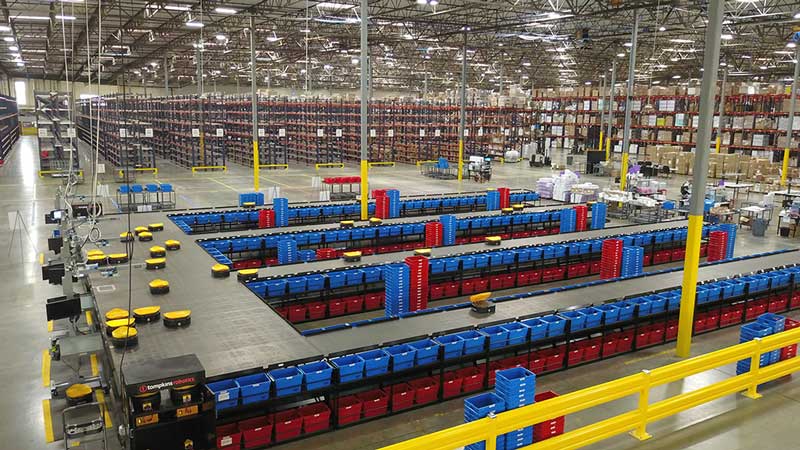Published April 23, 2019
Warehouse robotics are growing at a rate that exceeds manufacturing robotics. As key robotic skills improve and end users are educated in the best applications of robotics, robot adoption for warehousing tasks beyond transportation will become the drivers of growth in warehouse robotics.
Warehouse robotics is growing at a faster pace than the more mature market of manufacturing robotics; by some measures it is a 12 percent CAGR compared to a 10 percent CAGR for manufacturing robots. This trend is expected to accelerate as we see improvement in robotic skills such as optical recognition and autonomous navigation. Such skills are essential in warehouse environments where SKU proliferation is a growing concern and where navigation through unpredictable environments is common.
Transportation robots, which include AGVs and AMRs, is the category with the strongest growth among warehouse robotics. Sortation and order consolidation robots are typically a category of mobile robots and are therefore also in high growth mode. The relatively complicated tasks of picking and packing are slightly behind on the adoption curve, but the rapid advances in AI and deep learning means those tasks will see increasing robotic opportunities.
The rate of adoption of new technologies is not limited only by the pace of development, end users are hesitant to adopt because of risk avoidance and lack of a clear ROI.
Risk Avoidance: Many end users are using pilot projects with new technology but are hesitant to make a capital investment in live systems. Some have had negative experiences with new technology in the past and are hesitant with unproven solutions. In response, robotic solution providers are now introducing more flexible solutions which future-proof their technology by allowing for reconfiguration, scalability, and human collaboration.
Lack of a clear ROI is due to both the cost of robots and uncertainty about efficiency. Robot cost in general is decreasing due to the availability of cheaper technology despite increased tariffs. However, even at lower price points, most robots still only generate adequate ROI in a limited range of applications. Companies that have not depreciated recent investments in traditional material handling equipment are often unwilling to consider robotics even if the ROI is positive.
End users are currently on a steep learning curve to improve their understanding of the range of capabilities of robots and the applications for which they are suited. Improvements in product handling capabilities and what is detectable by machine vision has broadened the range of products for which there is a suitable application and positive ROI. Human-assist robots and robot systems that can be easily augmented by human labor are growing in acceptance and provide highly flexible solutions. By helping end users to future-proof their technology with flexibility and learning capability, robot makers will find that end users are ready and willing to invest.
Manufacturing robots achieved rapid adoption in the 1980s on the heels of end users who took the lead to employ them in the automotive industry. A similar effect is being staged in warehouse robotics by the myriad of end user pilot projects which are poised to turn into significant investments in live systems.
More Resources



